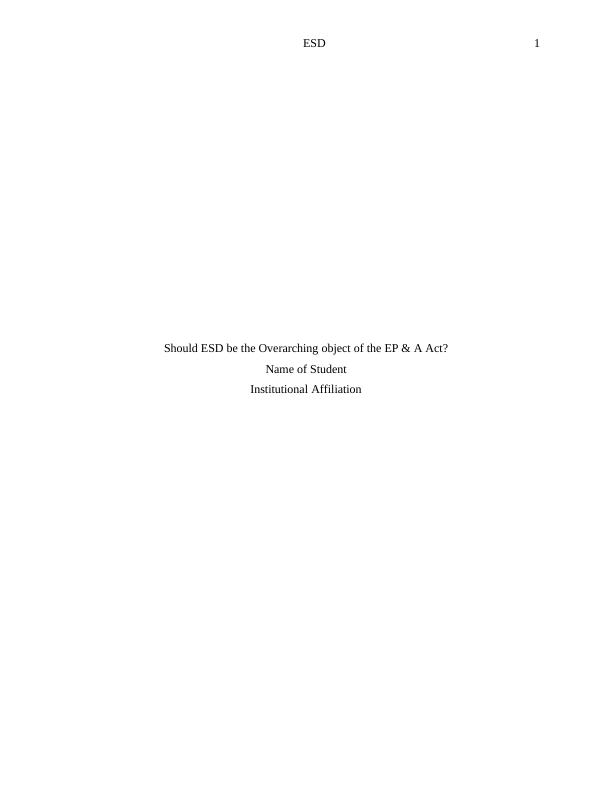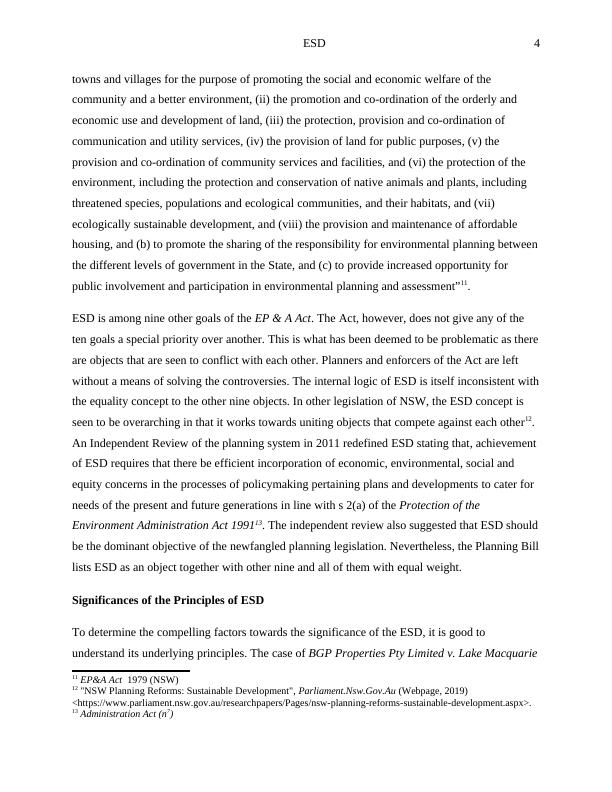ESD: Overarching Objective of EP & A Act?
Choose one of the three questions provided and write a research essay with a word limit of 2,500 words (excluding references). The essay should be uploaded via Turnitin and a bibliography is required. Referencing must comply with the AGLC 4.
12 Pages4009 Words424 Views
Added on 2022-12-15
About This Document
This article examines whether Ecologically Sustainable Development (ESD) should be the main objective of the Environmental Planning and Assessment Act (EP&A Act). It discusses the definition and principles of ESD, the objectives of the EP&A Act, and the resulting conflicts. The significance of the principles of ESD, such as the precautionary principle and intergenerational equity, is also explored through case studies. The article concludes by highlighting the importance of considering economic, environmental, social, and equitable considerations in decision-making processes.
ESD: Overarching Objective of EP & A Act?
Choose one of the three questions provided and write a research essay with a word limit of 2,500 words (excluding references). The essay should be uploaded via Turnitin and a bibliography is required. Referencing must comply with the AGLC 4.
Added on 2022-12-15
ShareRelated Documents
End of preview
Want to access all the pages? Upload your documents or become a member.
The Environmental Planning and Assessment Act 1979: A Critical Analysis
|10
|2872
|38
Laws of Sustainable Development - ESD
|5
|921
|47
ENVS 818 Environmental Planning - Macquarie University
|11
|2719
|90
Workplace Policies and Procedures for Sustainability INTRODUCTION 1 TASK 11 TASK 26 Email to Paul 9
|17
|5074
|334
Review of Environmental Factors Template for Council Roadside Environmental Management Framework
|41
|8643
|417
Integrating Sustainability in ICT Planning and Design Projects
|6
|1228
|108




